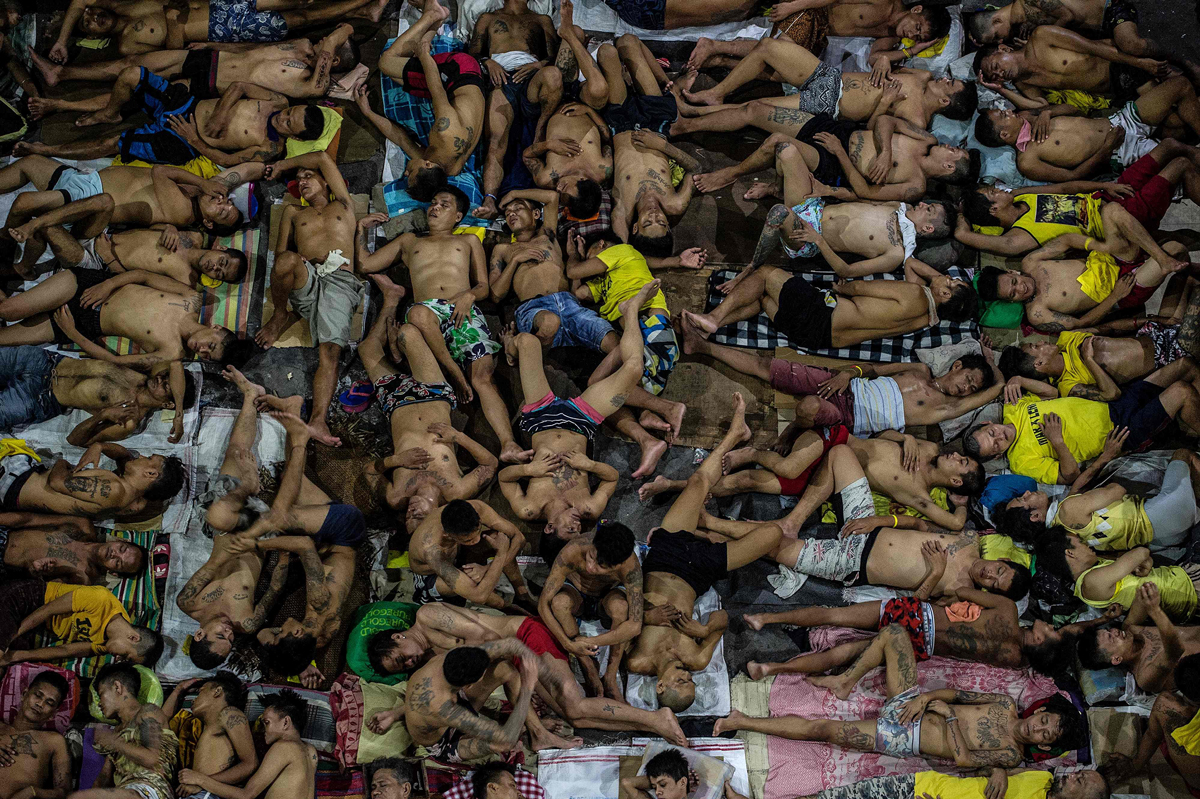In the previous article, the author covered the background and current status of the drug war currently raging in the Philippines under President Rodrigo Duterte. This war on drugs has led to the arrest and detention of thousands in Philippine jails. This article will cover the extreme conditions in these jails which were briefly touched on in the previous article.
There is a severe overcrowding problem in many jails throughout the Philippines as a direct result of increased policing and arrests of suspected drug users. The South China Morning Post noted in 2017 in an article titled “142,000 held in Philippine jails built for 20,000 as Duterte’s drug war intensifies,” that the majority of offenders are being held for drug-related crimes. More recent incarceration numbers were even higher, with 215,000 in prison in 2019. This is a significant prison population by itself ignoring other factors, and the justifications for imprisoning so many amid the drug war are very questionable as was mentioned in the previous article. However, what makes this situation exceptionally worrisome are the conditions that such a lack of infrastructure for prisoners creates. The Philippines has the second highest prison population density in the world, with the system at 463% capacity nationwide. This number is objectively concerning when one tries to imagine fitting 4.5x the maximum number of people a cell was designed for into it. In a documentary series cited in the previous article, an investigative journalist experienced life as a prisoner in Manila City Jail, documenting the daily routines and conditions of prisoners. The most immediate reaction any viewer has is alarm and concern over how little space each prisoner has. The journalist interviewed prisoners and they explained that they often have to sleep on their sides right next to each other to create enough space. There is also limited cushioning and pillows and it did not appear that the lights were turned out at night. These are inhumane conditions for thousands and this is just one prison of 933 nationwide.
One prisoner maintained his innocence for what he was charged with, and pointed out that a large number of the prisoners had been waiting for years for a trial. Human Rights Watch noted in 2016 that “Many detainees have been in jail longer than the maximum sentence for the[ir] offense” including waiting up to “14 years.” They also noted that “26 percent of Philippine courts are vacant of judges.” The World Prison Brief also includes data that shows that 75.1% of prisoners in the Philippines are in a pre-trial circumstance. These conditions of overcrowding and delayed or effectively suspended justice, coupled with already authoritarian policing demonstrate that the Philippines is committing serious abuses of human rights and decency in its legal system. Furthermore, as the documentary cited above covers, the seemingly arbitrary reason so many are being locked-up immediately calls into question the legitimacy of the Drug War, which is already under intense scrutiny for blatant and admitted acts of violence and killing.
Also of high concern has been the COVID-19 pandemic and its possibility of infiltrating the prison system. The shear density and close-quarters of prisoners in some of the prisons create a perfect environment for the virus to spread. In the early days of the pandemic there was fear of outbreaks in prisons and a lack of government action. Human Rights Watch noted a number of deaths related to the virus that went unreported by the government. Appropriately, “In July, over 15,000 inmates (…) were released.” NPR also reported in May that “10,000 inmates” were released amid the pandemic. The Journal of Public Health notes though that “even with the reduction of population, the cumulative incidence rate, in epidemiological terms, might not be reduced to a substantial percentage.” It is worth pointing out, however, that the virus has remained at relatively low levels throughout the Philippines. The number of prisoners infected by the virus, and the number who have died from it appear to be (relatively) low, but as mentioned above, there is uncertainty over the reliability of the actual figures because of underreporting, especially when “Social distancing is impossible in Philippine jails.”
Prisons are not created equal around the world, and countries’ views and actions regarding incarceration vary widely. The United States has by far the most incarcerated persons per capita, and while conditions inside are certainly preferable to those in many Philippine prisons, it is worth examining this issue as it is an area that often receives little attention, despite people being forced to often spend years in unimaginable conditions. The fact that in the Philippines so many prisoners are being held awaiting trial is only further appalling, but does not reduce the need to improve safety conditions for all. Shedding light on conditions that many people would consider unimaginable is of dire importance in ensuring that the rights of these prisoners are maintained, so that people can continue to speak out against the Philippine Government’s actions.

